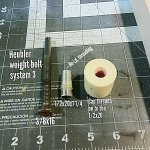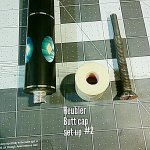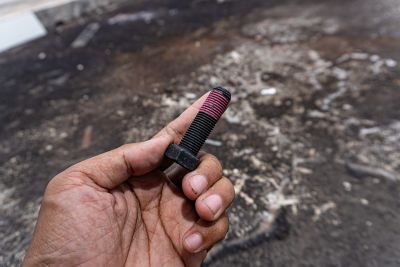> I had NO luck using every method I had available to me. Whatever epoxy they used was the dead nuts. I want some to eventually use for joint pin and A joint construction. Tommy D.
This is a way to get it out immaterial what glue was used. Use a large center drill and drill deep enough so that a 1/4" drill bits flutes will not catch non the screw driver slot. You then take a drill bit slightly smaller in size than a 1/4" and drill about 2" deep. You now take a 1/4" drill and drill about 1.5" deep. Now take your 1/4" drill bit and reverse it in your tail stock chuck so that it's shaft enters the now drilled hole instead of the flutes. Now, with the tail stock not clamped to your bed so that it can freely slide, put your lathe in reverse and put hand pressure against the back of the tail stock forcing the bit as far forward into the counter sunk hole as it will go. Hold this pressure and watch the drill bit. When the friction between the bit and the body of the bolt turns the bit cherry red release the hand pressure. This action will melt the glue and let both the drill bit and the bolt friction weld themselves together and the lathe being in reverse will just screw the bolt right out.
I've done this a number of times on joint pins when I'm afraid to much heat might damage the joint or finish.
Dick



